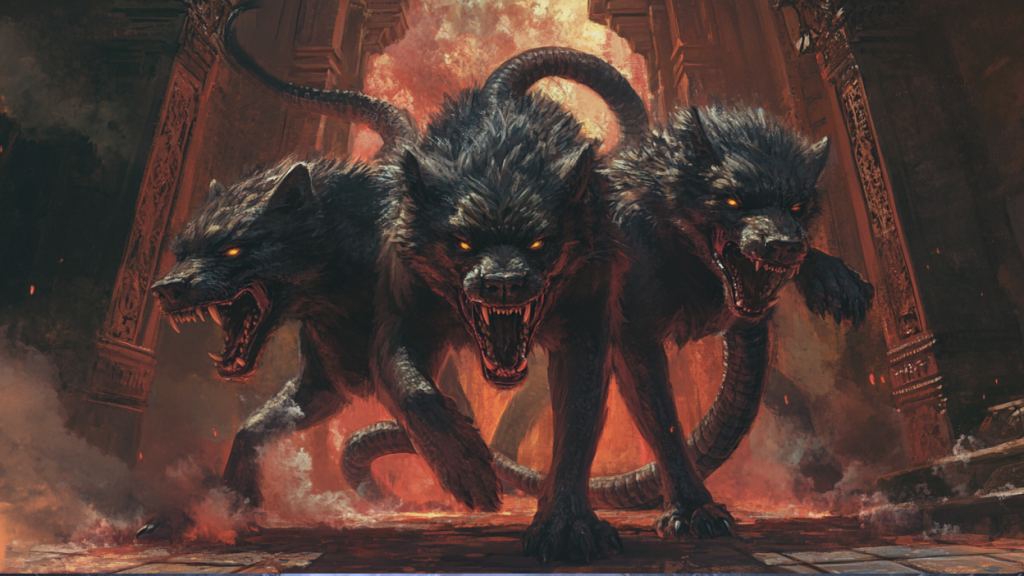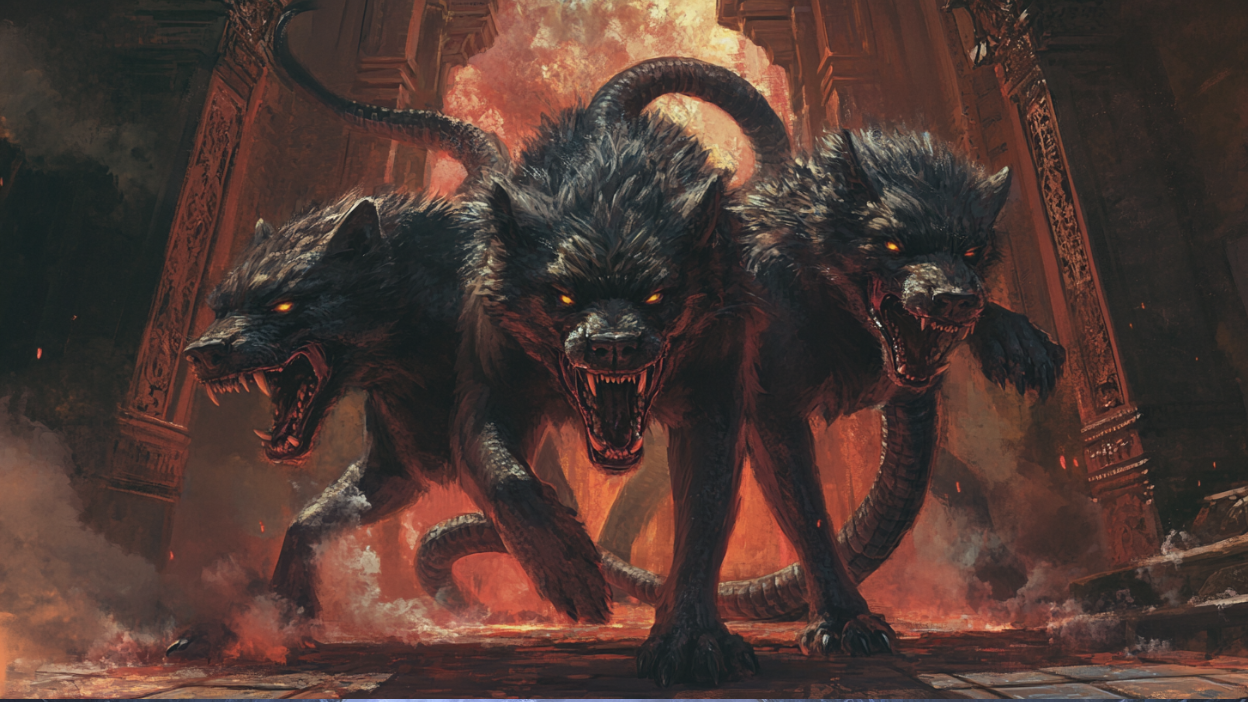
Heracles, the son of Zeus, was no stranger to hardship. After being driven mad by the goddess Hera, he committed a terrible act, killing his own wife and children. When he regained his senses, Heracles was consumed with guilt and sought a way to atone for his actions. He prayed to the god Apollo, who, through the oracle at Delphi, instructed him to serve King Eurystheus for twelve years as punishment.
During these years, Heracles was tasked with completing twelve nearly impossible challenges, known as the Twelve Labours. Each Labour tested his strength and willpower, and the final task would prove to be his greatest challenge yet—capturing Cerberus, the monstrous three-headed dog that guarded the gates of the Underworld.
Cerberus: The Beast of the Underworld
Cerberus, the terrifying creature Heracles had to capture, was not an ordinary dog. This fearsome beast had three heads, each more vicious than the last, a snake’s tail, and a mane of snakes. Cerberus’ sole purpose was to guard the gates of the Underworld, preventing the dead from escaping and keeping the living from entering. He was a loyal servant of Hades, the god who ruled the realm of the dead.
King Eurystheus believed that sending Heracles to the Underworld to capture Cerberus was a task too dangerous to complete. After all, no mortal could venture into the land of the dead and return. But Heracles had already proven himself to be more than just a man—he was a hero.
Journey into the Underworld
Before he could capture Cerberus, Heracles needed permission to enter the Underworld. He descended into the realm of the dead, following a dark path that led him deep underground. When he arrived, Heracles approached Hades himself and requested to take Cerberus to the surface.
Hades agreed, but on one condition: Heracles could not use any weapons. He would have to capture the beast using only his strength. This made the task even more daunting, but Heracles accepted the challenge without hesitation.
The Battle with Cerberus
When Heracles reached the gates of the Underworld, Cerberus stood guard, ready to attack any intruder. The monstrous dog growled, its three heads snapping and snarling at Heracles. But Heracles, with his unmatched strength, fought back. He wrestled Cerberus, avoiding the beast’s sharp teeth and serpent-like tail. Using nothing but his bare hands, Heracles subdued the fierce creature, wrapping his arms around it until Cerberus could no longer fight.
Heracles’ Triumph
With Cerberus subdued, Heracles led the beast out of the Underworld and back to the surface, completing his final Labour. When he presented Cerberus to King Eurystheus, the king was so terrified by the sight of the three-headed monster that he cowered in fear. This marked the successful completion of Heracles’ twelve years of service.
After fulfilling his task, Heracles returned Cerberus to the Underworld, keeping his word to Hades. His triumph over Cerberus demonstrated not only his immense physical strength but also his courage and determination in the face of seemingly insurmountable odds.
The Legacy of Heracles
Heracles’ final Labour—capturing Cerberus—cemented his legacy as one of the greatest heroes in Greek mythology. His ability to enter the Underworld, subdue a terrifying beast, and return unscathed was a testament to his extraordinary strength and heroism. Through his Twelve Labours, Heracles became a symbol of resilience and perseverance, qualities that defined him as a hero whose name would be remembered for centuries.





